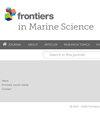通过绿色金融工具在中国智能港口发展中的智能决策:海洋生态系统的可持续方法
IF 3
2区 生物学
Q1 MARINE & FRESHWATER BIOLOGY
引用次数: 0
摘要
尽管智能港口的发展对生产力、节能和环境改善有好处,但智能投资策略应考虑在建设和运营过程中对海洋生态系统的潜在不利影响。为了解决这一问题,本研究旨在利用中国15个主要港口的数据,研究绿色金融工具与人工智能驱动的智能决策(IDM)的整合。方法采用机器学习(ML)模型,结合SHapley加性解释(SHAP)分析,量化绿色金融对关键环境指标的影响,包括总有机碳(TOC)、碳通量、碳埋藏率、污染负荷指数(PLI)、流速和侵蚀/沉积率(E/DR)。首先,使用ML模型根据历史数据估计这些指标。随后,利用SHAP来解释金融工具对生态指标的影响。这样就可以确定对特定海洋区域的生态指标有积极影响的金融工具,从而支持海洋开发计划署在相应地区优先考虑这些工具。结果绿色债券对碳埋藏率的SHAP值为0.24 ~ 0.30,对PLI的SHAP值为0.17 ~ 0.20,特别是在上海和宁波-舟山等先进港口,而极端梯度增强(XGBoost)的预测精度更高。本研究建议优先发展绿色债券、绿色租赁和绿色信贷。政策制定者应该为绿色债券和绿色租赁建立专门的框架,特别是针对拥有先进智能基础设施的港口(L3-L4)。应推动绿色信贷计划,以支持一级至二级港口的基础设施建设和可再生能源项目。本文章由计算机程序翻译,如有差异,请以英文原文为准。
Intelligent decision-making in smart port development in China through green finance instruments: a sustainable approach to the marine ecosystem
IntroductionDespite the benefits of smart ports development for productivity, energy saving, and environmental improvement, an intelligent investment strategy should consider potential adverse effects on marine ecosystems during the construction and operation processes. To address this issue, this study aims to examine the integration of green finance instruments with artificial intelligence (AI)-driven intelligent decision-making (IDM), utilizing data on 15 major Chinese ports.MethodsEmploying machine learning (ML) models, alongside SHapley Additive exPlanations (SHAP) analysis, the research quantifies the impact of green finance on critical environmental metrics, including total organic carbon (TOC), carbon fluxes, carbon burial rate, pollution load index (PLI), flow velocity, and erosion/deposition rate (E/DR). First, ML models are employed to estimate these indicators based on historical data. Subsequently, SHAP is utilized to interpret the impact of financial instruments on ecological indicators. This enables the identification of financial instruments that positively influence ecological indicators in specific marine regions, thereby supporting IDM to prioritize those instruments in the corresponding areas.ResultsFindings highlight green bonds as the most influential, with SHAP values of 0.24-0.30 for carbon burial rate and 0.17-0.20 for PLI, particularly in advanced ports like Shanghai and Ningbo-Zhoushan, while eXtreme gradient boosting (XGBoost) achieves superior predictive accuracy.DiscussionThis study suggests that green bonds, green leasing, and green credit should be prioritized. Policymakers should establish a dedicated framework for green bonds and green leasing, specifically targeting ports with advanced smart infrastructure (L3-L4). Green credit schemes should be promoted to support infrastructure enhancement and renewable energy projects in L1-L2 ports.
求助全文
通过发布文献求助,成功后即可免费获取论文全文。
去求助
来源期刊

Frontiers in Marine Science
Agricultural and Biological Sciences-Aquatic Science
CiteScore
5.10
自引率
16.20%
发文量
2443
审稿时长
14 weeks
期刊介绍:
Frontiers in Marine Science publishes rigorously peer-reviewed research that advances our understanding of all aspects of the environment, biology, ecosystem functioning and human interactions with the oceans. Field Chief Editor Carlos M. Duarte at King Abdullah University of Science and Technology Thuwal is supported by an outstanding Editorial Board of international researchers. This multidisciplinary open-access journal is at the forefront of disseminating and communicating scientific knowledge and impactful discoveries to researchers, academics, policy makers and the public worldwide.
With the human population predicted to reach 9 billion people by 2050, it is clear that traditional land resources will not suffice to meet the demand for food or energy, required to support high-quality livelihoods. As a result, the oceans are emerging as a source of untapped assets, with new innovative industries, such as aquaculture, marine biotechnology, marine energy and deep-sea mining growing rapidly under a new era characterized by rapid growth of a blue, ocean-based economy. The sustainability of the blue economy is closely dependent on our knowledge about how to mitigate the impacts of the multiple pressures on the ocean ecosystem associated with the increased scale and diversification of industry operations in the ocean and global human pressures on the environment. Therefore, Frontiers in Marine Science particularly welcomes the communication of research outcomes addressing ocean-based solutions for the emerging challenges, including improved forecasting and observational capacities, understanding biodiversity and ecosystem problems, locally and globally, effective management strategies to maintain ocean health, and an improved capacity to sustainably derive resources from the oceans.
 求助内容:
求助内容: 应助结果提醒方式:
应助结果提醒方式:


